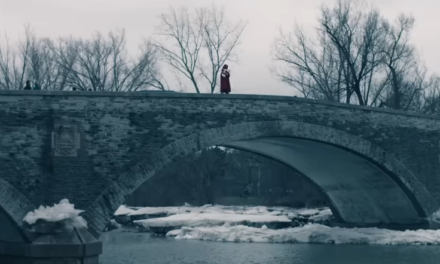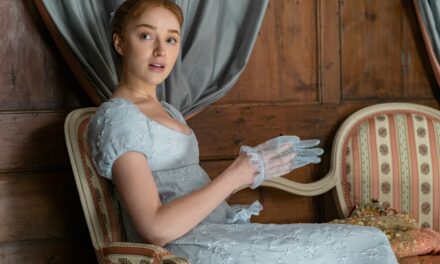When I went with a friend to Plockton in the Scottish Highlands, admittedly over a decade ago, despite the fact that it was one of the main filming locations, memorabilia for Hammer Horror’s The Wicker Man (1973, dir. Hardy) were really nowhere to be seen. Instead, the tourist information centre had a number of Hamish MacBeth (BBC Scotland 1995-1997)[1] items on display. Clearly, at that time at least, it was the television series and its portrayal of the Highlands that was viewed as more marketable to tourists than the film. For those who have not seen the film (spoilers!), it features the devoted Christian police Sergeant Neil Howie (Edward Woodward) who is lured to Summerisle (in the Highlands and Islands) by Lord Summerisle (Christopher Lee). Though supposedly there in search of a missing girl, this was a ruse designed to get the virginal Howie to the island in order for Summerisle and his pagan (extremely sexually active) Islanders to sacrifice Howie by burning him alive in a giant ‘wicker man.’[2] While the series did not explicitly subvert The Wicker Man, Hamish MacBeth clearly responds to a number of the ‘backwards/primitive’ tropes that the film and many other texts relating to rural areas or folk horror rely upon. At the same time, it engages in the nuance, complexity and ambiguity of what would now be considered part of quality TV. In this, coupled with the use of the same filming location, I argue, the series and the film function paratextually (Gray, 2010), at least for those familiar with both texts. To illustrate this point, I shall focus on two linked elements which run throughout the majority of the series: sociocultural/subcultural expressions of spirituality and the supernatural and how both relate to Highland-Scottishness and its representation.
The series is more than just a subversion of The Wicker Man or folk horror tropes more generally, of course. A loose adaptation of M. C. Beaton’s novels, Hamish MacBeth is driven by its eccentric characters more than by plots, overarching or otherwise. While crime is a feature of most episodes, they are often petty crimes and/or committed by or with the assistance of Hamish and/or another regular character. Writing of Beaton’s novels, Chakraborti (2014) notes that ‘the pastoral detective story thus combines the illusion of freedom found in the literary tradition of the pastoral with the suspense that characterizes the plot of a comic crime story’ (Chakraborti, 2014: 68). But the liminality of the (perceived-)isolated setting is also relevant to that illusion. While the series is hardly Gothic, ghosts are occasionally present in the diegesis, seen by the titular PC Hamish MacBeth (Robert Carlyle). Rather than a ghostly dagger or visions of Banquo, however, in 1.5 this MacBeth sees the ghost of a woman whose nephew had been killed along with the ghost of his own dog who was later killed by the same driver. In 3.8 Hamish is also visited by the ghost of Angus McIver, his friend TV John’s father (Ralph Riach in both roles). Angus visits instead of TV John as TV John had only recently died and had not yet mastered manifestation. TV John himself is shown across the series to have ‘second sight,’ another particularly Scottish-associated trope (Stiùbhart 2020),[3] which also manifests unconsciously as a protective function to the fictitious village of ‘Lochdubh’ (‘Black Lake,’ or, as Hamish describes it in 1.1, ‘a good place with good people’) in general (3.3) and Hamish in particular (1.5, 2.4-5, 3.7-8).
In addition to the subversion of Shakespeare’s Scottish Play to which I have already alluded, the idea of Scotland itself as being ‘haunted’ is a common Victorian trope (McGill, 2022). But, as McGill (2022) also notes, this idea of a haunted landscape, in addition to being connected to the Highland Clearances, is also particularly tied into the idea of Scottish national identity. The series, however, uses its ghosts and spirituality more generally as a protective function. While the villagers are shown to be somewhat closed off to ‘incomers’ (1.2), they are generally only aggressive towards those who explicitly mean harm (3.3). There is also no explicit distinction made between English and Scottish incomers with regard to how they are perceived,[4] which avoids the reductiveness of viewing Scottishness primarily in relation to Englishness. In 2.5 an overzealous visiting constable who is taking over for Hamish (on medical leave for depression) is driven to exhaustion by the quotidian petty crimes that Hamish overlooks, but this is done in part to protect the village and in part to protect the visiting PC from being unable to work with any future communities where he might be posted rather than an attempt at causing harm a la Summerisle. If the supernaturally-gifted TV John is the analogue to Christopher Lee’s Lord Summerisle, then TV John is shown to be unfailingly benevolent, subverting that aspect of folk horror.
The other aspect of The Wicker Man and folk horror more generally that the series subverts relates to the conflict between Christianity and New Age/paganism. Through Caesar (De Bello Gallico VI.16.3-5), Hardy’s film directly connects Summerisle et al. to the druids, who Hutton (2013) notes are generally connected to sex and violence in English and Scottish literature. In the film, of course, Edward Woodward’s zealously Christian Sergeant Howie is set up against the pagan/druidic Summerisle and his island of extremely sexually active people. Hamish MacBeth includes these elements as well but, as with the more general supernatural aspects, the series functions to subvert the Highland stereotypes that the film espouses. In 1.4, the New Age group leader Zoot McPherrin (Ron Donachie) is introduced as the leader of a 70s-era throwback ‘free love’ commune. Though the episode structurally juxtaposes Zoot and an extremely religious bank manager, sexual freedom and a more fundamentalist style Christian sect only come into direct conflict in 2.1. In this episode, Malachi (Philip Jackson) the preacher of the local ‘Stony Path’ (non-violent) Christian sect, targets Hamish for ‘living in sin’ with his girlfriend Alex (Valerie Gogan), up to the point of insisting that Hamish is the Devil. Malachi is also shown to be putting stones in his own shoes to cause himself pain (i.e., suffering in the name of his faith), speaking in tongues and otherwise being unpleasant, though not abusive or otherwise harming anyone. He is initially contrasted with the local mainstream preacher, Reverend Snow (Laurie Ventry), who believes that God is love, so anywhere love is present, in his view, God is also present. While the episode itself is somewhat Byzantine in its plot, to spoil it all for you (sorry), Malachi’s wife, Bethsheba (Juliet Cadzow), is having an affair with Rev Snow. Rather than being angry about this affair, however, Malachi wants both Bethsheba and Snow to be happy together. Because of that, he concocts this whole plan (i.e., Malachi becoming awful and seemingly going mad, accusing Hamish of being the Devil being part of this) so that Snow can ‘save’ Bethsheba. In that context, with Malachi being shown to be awful, Bethsheba and Snow are not viewed negatively by the community for leaving Malachi and entering into a relationship of their own. This is in part because Malachi wants Bethsheba to be happy and also because Malachi and Zoot are in love and want to be together. Hamish, though somewhat taken aback by all this, agrees to keep everything secret and not to interfere.[5] Thus, instead of religion or paganism itself being a threat, as in The Wicker Man, what this episode illustrates is that it is harshness or zealotry in religion that is the bulwark of love and that, with love as its foundation, multiple different iterations of spirituality can live in harmony.
Much as the series subverts and leavens the more serious topics with which it engages as a crime drama, Hamish MacBeth does the same with the concept of the Scottish supernatural and similar traditions; in essence, what The Wicker Man turns into a negative representation and folk horror, Hamish MacBeth renders intelligible, progressive and ‘cosy’ (cf Matzke and Mühleisen, 2006 on perceived-British cosy mysteries). It also differentiates between New Age, sexually free spirituality and the supernatural as well as negotiating between Christianity and New Age beliefs. Most importantly, it represents the Highlands, inasmuch as the industrial requirements of BBC Scotland at the time allowed, in a way which subverts the negative stereotypes espoused by the dominant English paradigm without resorting to the reductiveness of strategic essentialism (Spivak, 1988), the limited emotional expressions of saleable diversity (Conway, 2013) or resorting to pitting Englishness against Scottishness. Instead, the series utilises heteroglossia and illustrates the intelligence and compassion of its eccentric characters in such a way as to render the unfamiliar area familiar to viewers across Britain, but which is also firmly contextualised in recognisable Scottish-associated tropes. While one can argue that a cosy mystery iteration of Scottishness is the subaltern speaking with the voice of the coloniser, it can just as easily be read as a form of glocalisation and communication in such a way as to render The Wicker Man’s frightening rural Scotland not only intelligible but risible.
What is evident from Gray (2010) is that paratexts are relational and often texts in their own right; even when not explicitly connected in the diegeses they can be viewed as connected by an audience, particularly when they are at least in part shot in the same location. Piper (2013) notes that audiences are often concerned about negative representations of their regions due to a worry that external audiences may not read such representations critically, something my own dissertation research supports, including clearly fictionalised representations featuring sf/fantasy elements. In this case, as the dearth of Wicker Man memorabilia in 2012-era Plockton implies, the locals seem to favour the more nuanced subversion of rural idyll of Lochdubh to the ostensible counter-culture threat to that idyll of Summerisle, though a full fan tourism study would be needed to say for certain. Regardless, now that the series has been added to BBC iPlayer, new and returning audiences will be able to (re)experience that representation and decide for themselves. Slàinte mhath!
Dr Melissa Beattie is a recovering Classicist who was awarded a PhD in Theatre, Film and TV Studies from Aberystwyth University where she studied Torchwood and national identity through fan/audience research as well as textual analysis. She has published and presented several papers relating to transnational television, audience research and/or national identity. She is suddenly an independent scholar. She has worked at universities in the US, Korea, Pakistan, Armenia, Ethiopia and for a brief time in Cambodia. She can be contacted at tritogeneia@aol.com.
Footnotes
[1] The series was also recently added to BBC iPlayer for those in the UK.
[2] ‘Alii immani magnitudine simulacra habent,[4] quorum contexta viminibus membra vivis hominibus complent; quibus succensis circumventi flamma exanimantur homines’ (Caesar, De Bello Gallico VI.16.3-5). The word vimin can be any woven basketry material, hence the translation of ‘wicker,’ though vimin can also mean any kind of pliant twig.
[3] The series does not associate second sight exclusively with Scottishness, however; in 2.4 a visiting English police officer (Dinah Stabb) also has the ability.
[4] In 1.2 an Englishwoman’s overzealous embrace of Highland traditions is viewed with annoyance only when she tries to take over a local heritage celebration, in essence trying to tell the locals what their traditions and culture are rather than listening to them. She and her English husband are otherwise welcomed.
[5] This can also be read as intertextual to the 1994 film Priest (dir. Bird) in which Carlyle plays a Glaswegian dockworker in reciprocated love with a homosexual Catholic priest.
References
Chakraborti P (2014) Crime fiction and the Scottish Highlands. Aureole 5(2): 68-74.
Conway K (2013) Little Mosque on the Prairie and the Paradoxes of Cultural Translation. Toronto: University of Toronto Press.
Gray J (2010) Show Sold Separately: Promos, Spoilers and Other Media Paratexts. NYC: NYU Press.
Hutton R (2013) Druids in modern British fiction: the unacceptable face of Celticism. In Gibson M Trower S and Tregidga G (eds). Mysticism, Myth and Celtic Identity. London: Routledge, pp. 23-37.
Matzke C and Mühleisen S (2006) Postcolonial postmortems: Issues and perspectives. In Matzke C and Mühleisen S (eds), Postcolonial Postmortems: Crime Fiction from a Transcultural Perspective. Amsterdam: Rodopi, pp. 1-16.
McGill M (2022) The evolution of haunted space in Scotland. Gothic Studies 24: 18-29. https://doi.org/10.3366/gothic.2022.0118
Piper N (2013) Audiencing Jamie Oliver: Embarrassment, voyeurism and reflexive positioning. Geoforum 45: 346-355. https://doi.org/10.1016/j.geoforum.2012.11.025
Spivak, G. C. (1988). Can the subaltern speak? In Nelson C and Grossberg L (eds), Marxism and the Interpretation of Culture. Urbana/Chicago: University of Illinois Press, pp. 267-310.
Stiùbhart D U (2020) The invention of Highland second sight. In Goodare J and McGill M (eds). The Supernatural in Early Modern Scotland. Manchester: Manchester University Press, epub, n.pag.






Fascinating read! Been having a bit of a “Wicker Man” revisit of late (spurred on by the John Walsh book from Titan, although – for me – I think Allan Brown’s volume remains the gold standard)… but also becoming increasingly convinced (notably after a recent MC Beaton documentary) that “Hamish Macbeth” would be a neat thing to watch somewhere along the line. I seem to recall that it was a Sunday night show at a time in my life when I simply wasn’t around to watch Sunday night shows. But definitely one to add to the “to watch” list.
Thanks for another enjoyable read. Much appreciated! 🙂
All the best
Andrew
My pleasure! 🙂 And it’s a definite neat thing to watch– they do some really interesting stuff with Hamish in particular with regard to characterisation. If you can’t find a copy of ‘West Coast Story’ I have an off-air copy that I can send a link to. 🙂